Cursor Control: The Evolution of Design Hardware
Discovering the tools behind precision — from the first computer mouse to modern pen tablets and touch interfaces. How designers choose between speed, accuracy, and comfort.
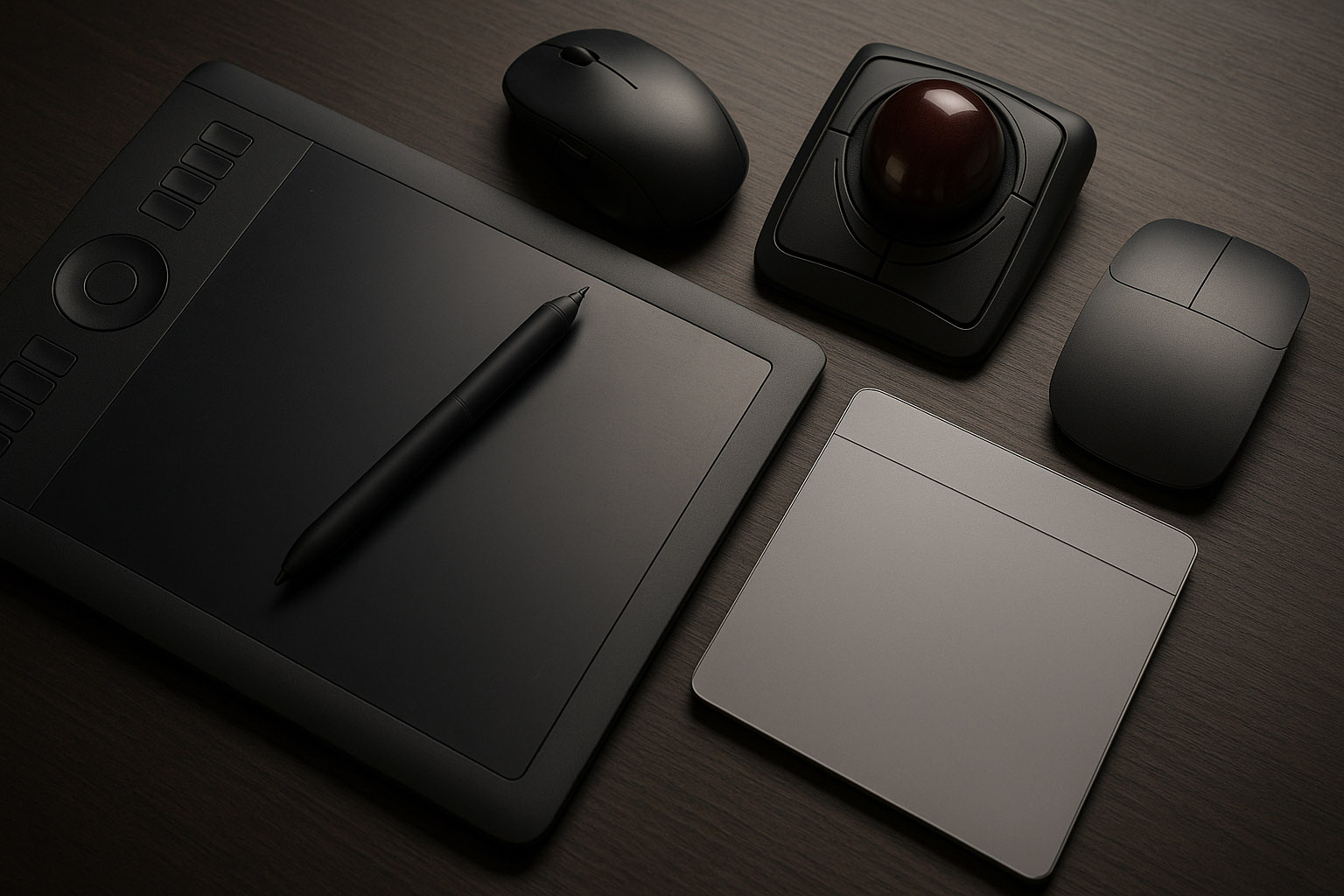
About cookies on this site
We use cookies to collect and analyse information on site performance and usage, to provide social media features and to enhance and customise content and advertisements.
Discovering the tools behind precision — from the first computer mouse to modern pen tablets and touch interfaces. How designers choose between speed, accuracy, and comfort.

Behind every pixel-perfect design is a tool that moves the cursor. From early trackballs to today’s high-end pen displays, hardware for controlling the cursor has evolved to balance speed, precision, and comfort.
Unknown fact: The first Wacom tablets from the 1980s used electromagnetic resonance technology — allowing the pen to draw power wirelessly from the tablet surface, a system still used today.
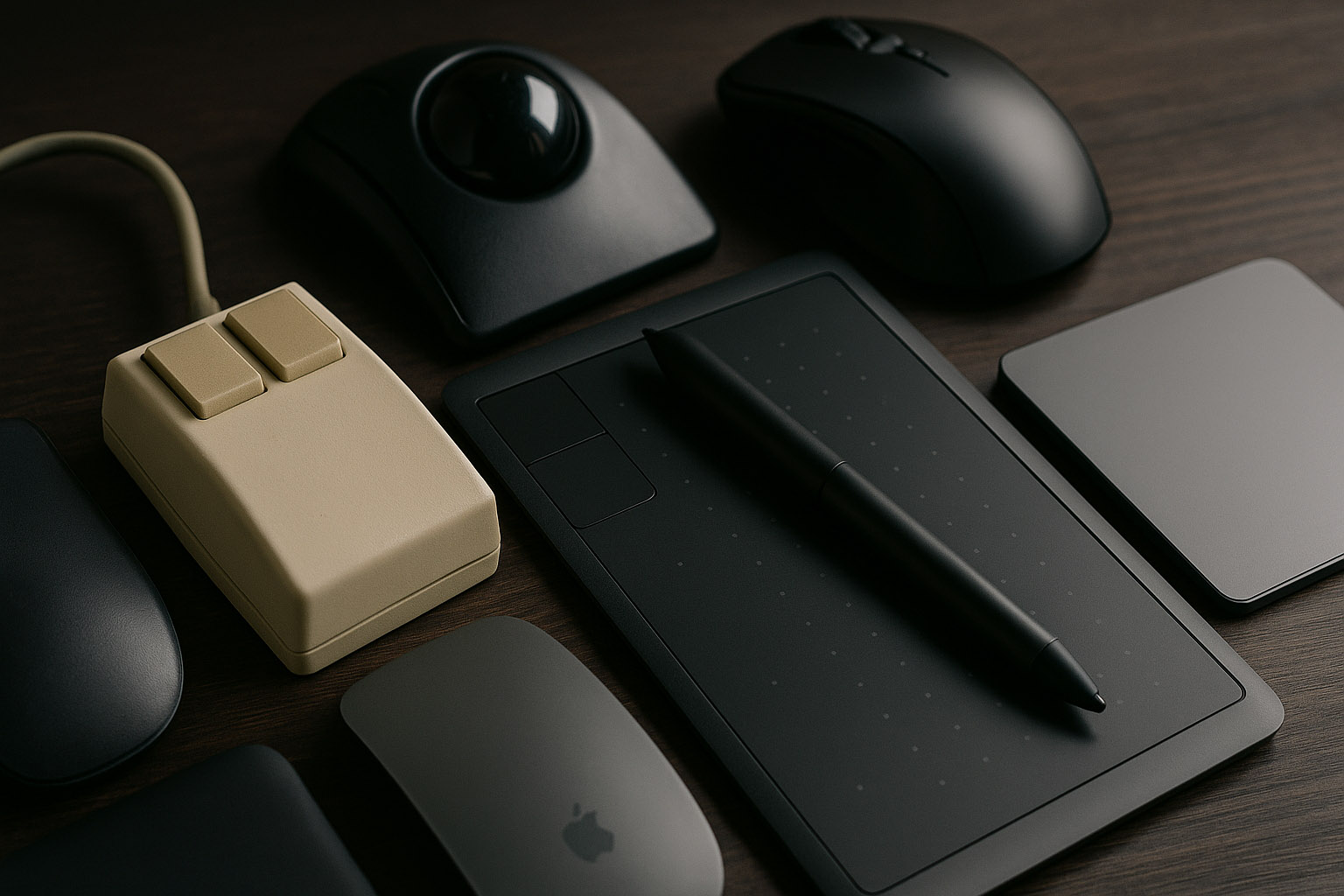
Purpose: General use, universal across all professions.
Benefits: Affordable, easy to master, precise for most digital tasks.
Cons: Limited in expressive motion for drawing or pressure-sensitive work.
Average Cost: €10–€120 depending on brand and sensor quality.
Work Speed: Excellent for navigation, medium for creative precision.
Best for: UI/UX designers, office tasks, 3D navigation (with extra buttons or ergonomic designs).

Purpose: Natural drawing, handwriting, and precision control for design and art.
Benefits: Pressure and tilt sensitivity mimic traditional drawing tools.
Cons: Steeper learning curve; can be tiring without ergonomic setup.
Average Cost:
Unknown fact: Many professionals use small tablets (like Wacom S size) — smaller motion means faster strokes and less fatigue over long sessions.
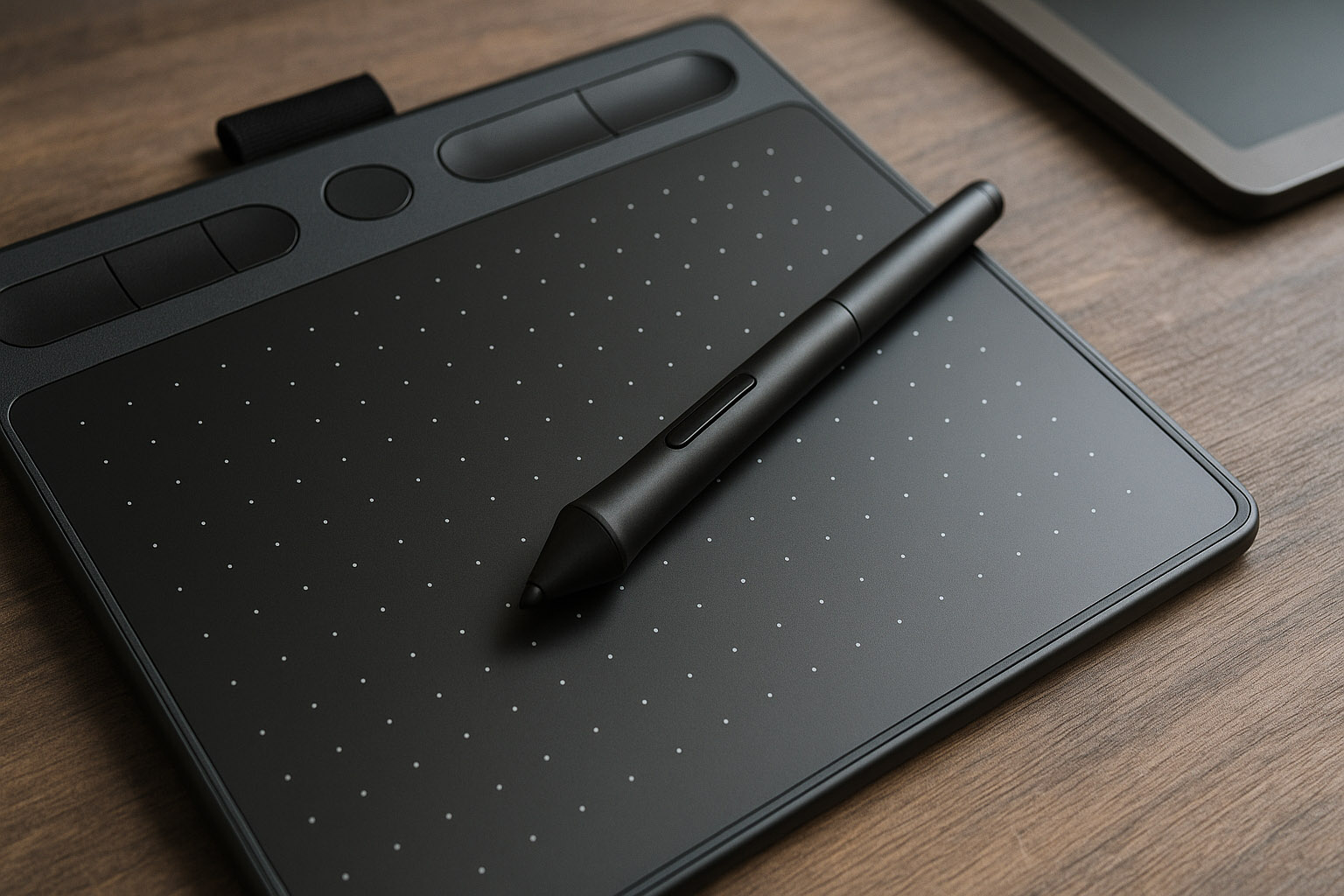
Purpose: Specialized navigation in CAD, 3D modeling, and video editing.
Benefits: Precision rotation, minimal wrist movement, customizable buttons.
Cons: Non-intuitive for beginners; niche usage.
Average Cost: €80–€400
Work Speed: Fast in skilled hands, but rarely used outside technical fields.
Hidden insight: NASA engineers used custom trackballs for spacecraft interface controls — they were more reliable in microgravity than mice.
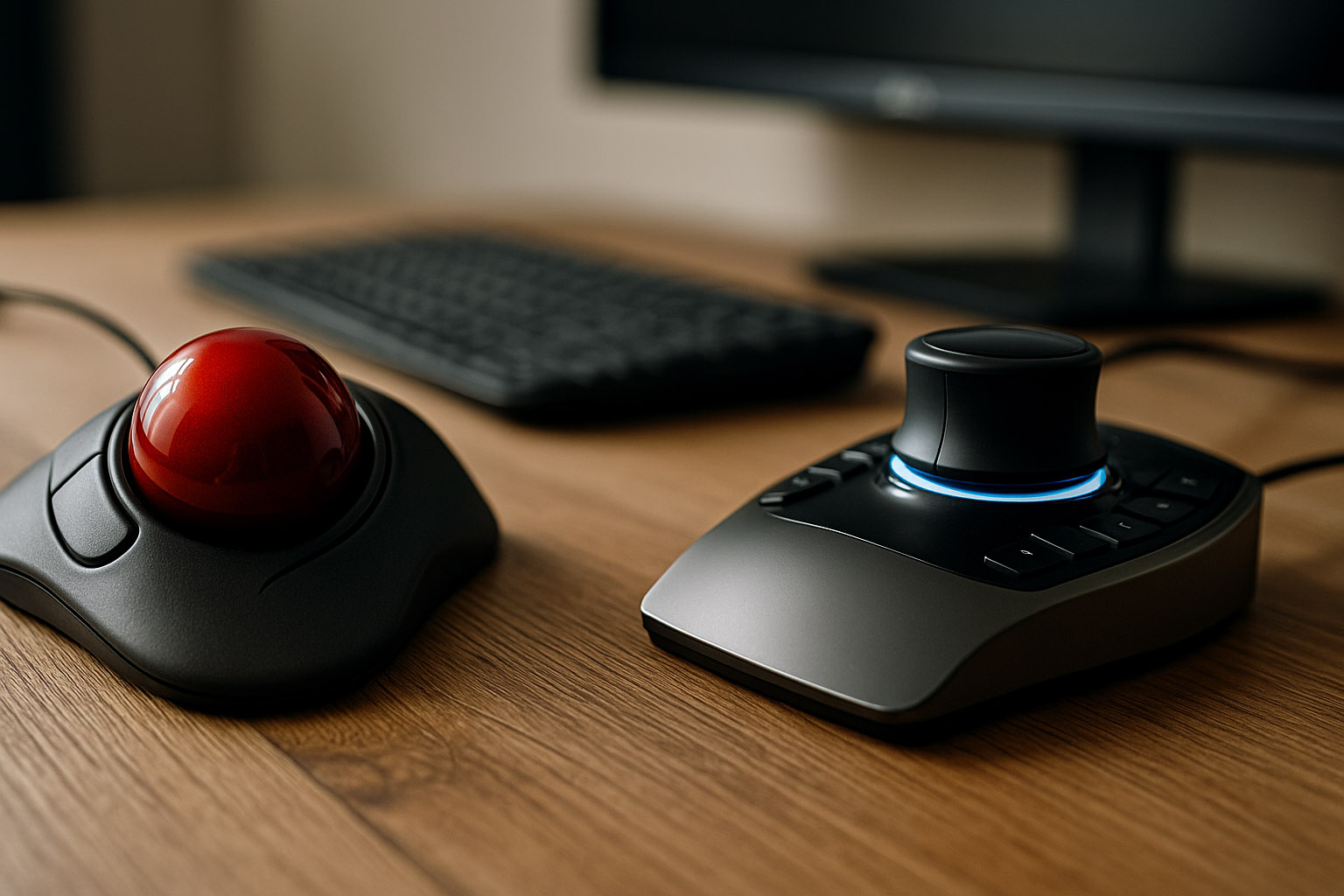
Purpose: Simplified navigation, often built into laptops.
Benefits: Multi-touch gestures, compact, intuitive.
Cons: Low precision for design or detailed work.
Average Cost: Usually integrated; standalone touchpads €60–€150.
Work Speed: Fast for casual use, slow for precision.
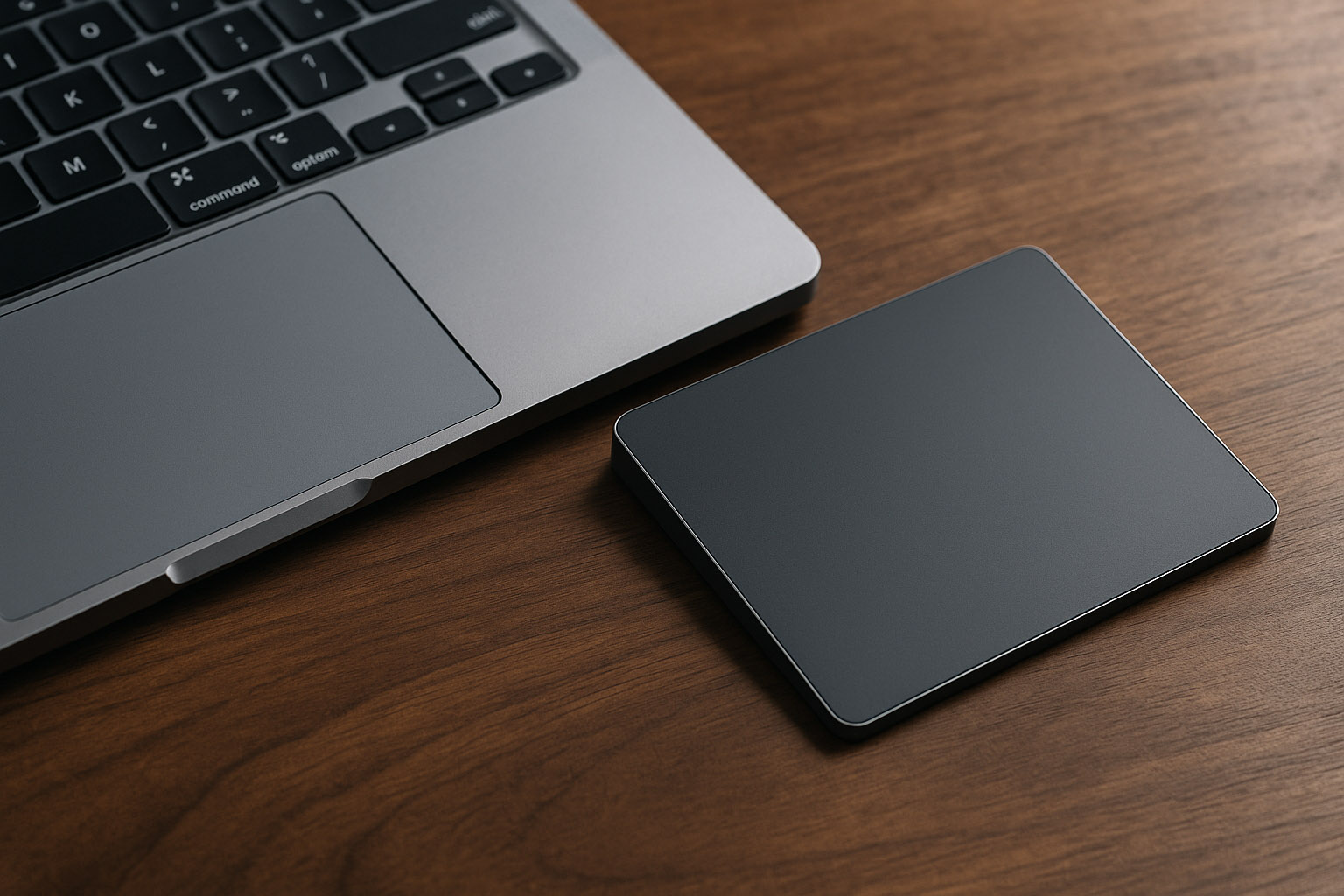
| Device Type | Strength | Weakness |
|---|---|---|
| Mouse | Speed | Low expressivity |
| Pen Tablet | Pressure & control | Learning curve |
| Trackball | Precision | Niche use |
| Touchpad | Gestures | Lack of precision |
Unknown insight: Some studios configure dual-input setups — tablet in the dominant hand and mouse or trackball in the other, optimizing both speed and precision.
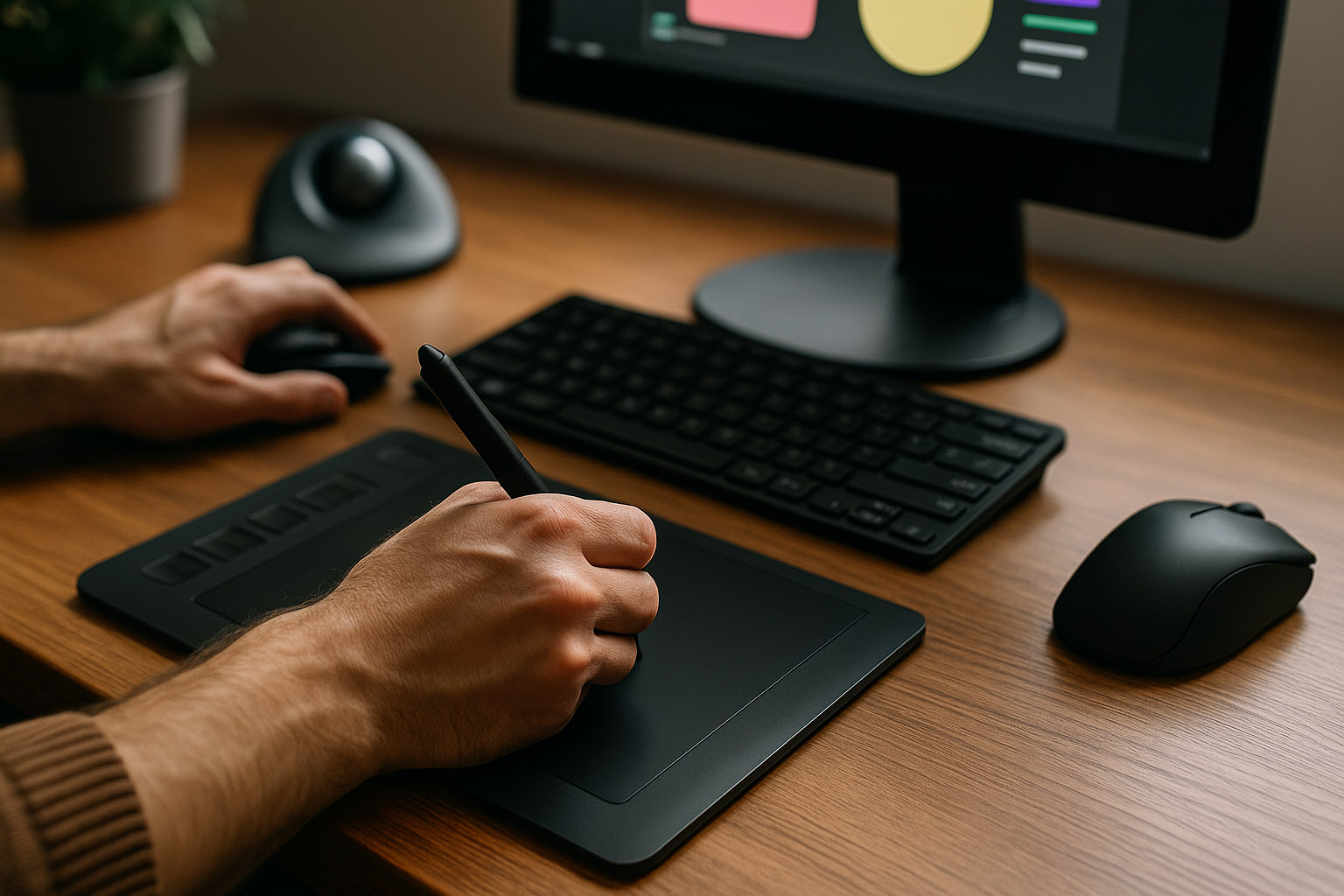
AI-driven eye tracking, gesture sensors, and haptic feedback are redefining “input.”
Companies like Logitech, 3Dconnexion, and Wacom experiment with adaptive tools that adjust sensitivity based on your task — from sketching to scrolling.
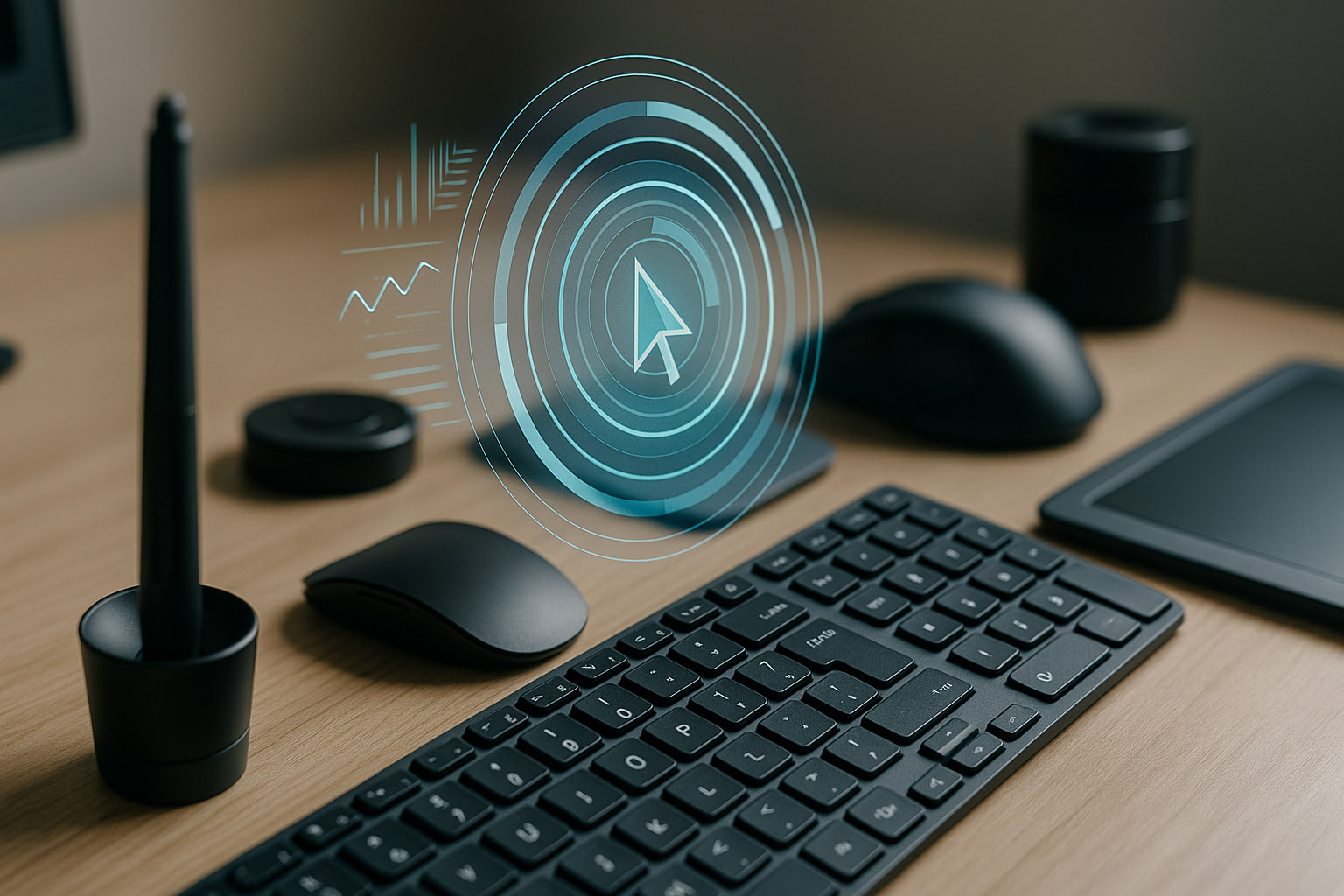
Soon, designers may not move cursors at all — the system might move for them, predicting intent from context and gaze.
“The choice of input device is not just about comfort — it’s about **how you think, create, and connect with your tools.”
Send us your brief, your wildest idea, or just a hello. We’ll season it with curiosity and serve back something fresh, cooked with care.